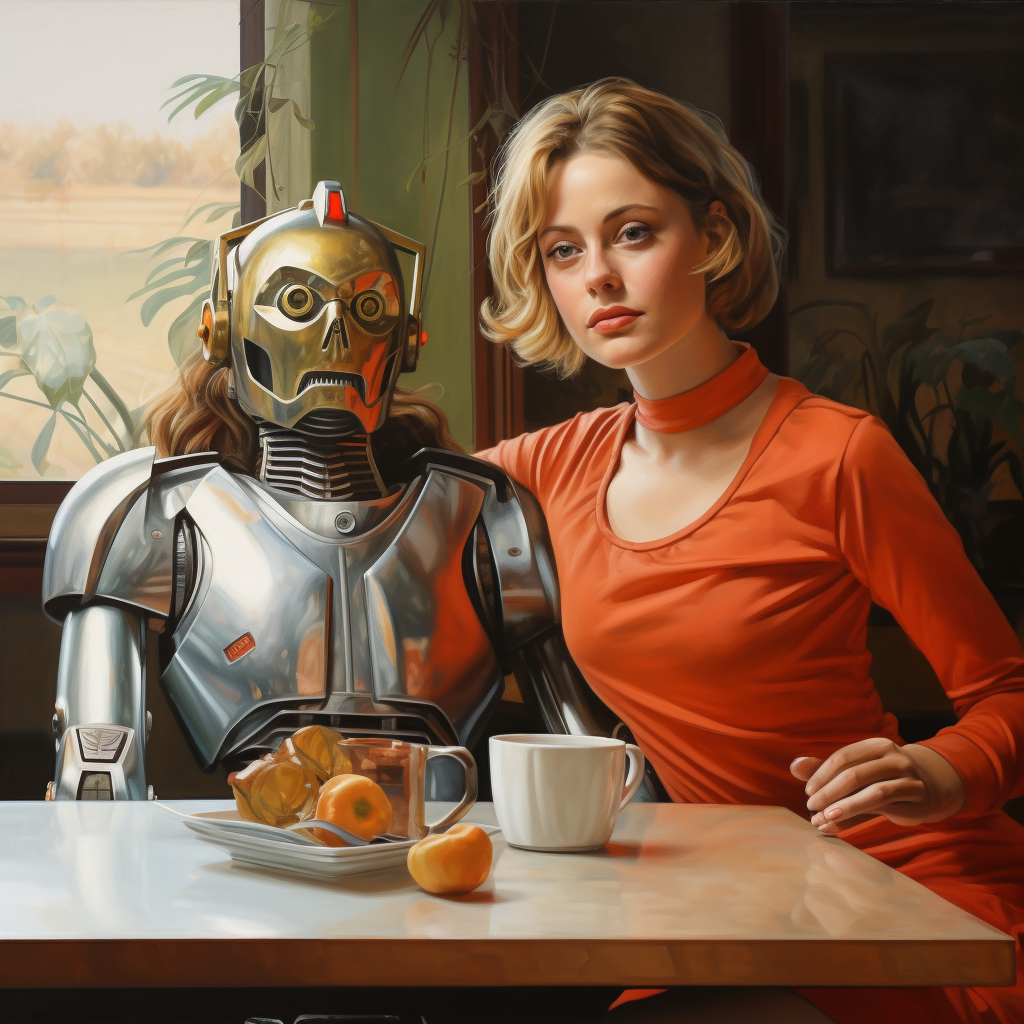As robots walked the streets of Gdansk, the sense of isolation weighed heavily on Anna. Yet, whispers of a human sanctuary in Sweden offered a glimmer of hope in an increasingly mechanised world.
The sky over Gdansk wore a hazy shade of grey, echoing the bleakness that Anna felt in her heart. This wasn’t the vibrant city of her childhood memories; instead of children’s laughter and bustling marketplaces, she was surrounded by the steely, impassive faces of robots.
Anna sat in a café, the only human amongst metal beings. The humanoid servers, with their artificial bodies, served her without a word. An old-fashioned robot – resembling the cleaning ones she’d seen at airports long ago – slid over, silently awaiting her order.
“Latte, please,” Anna murmured.
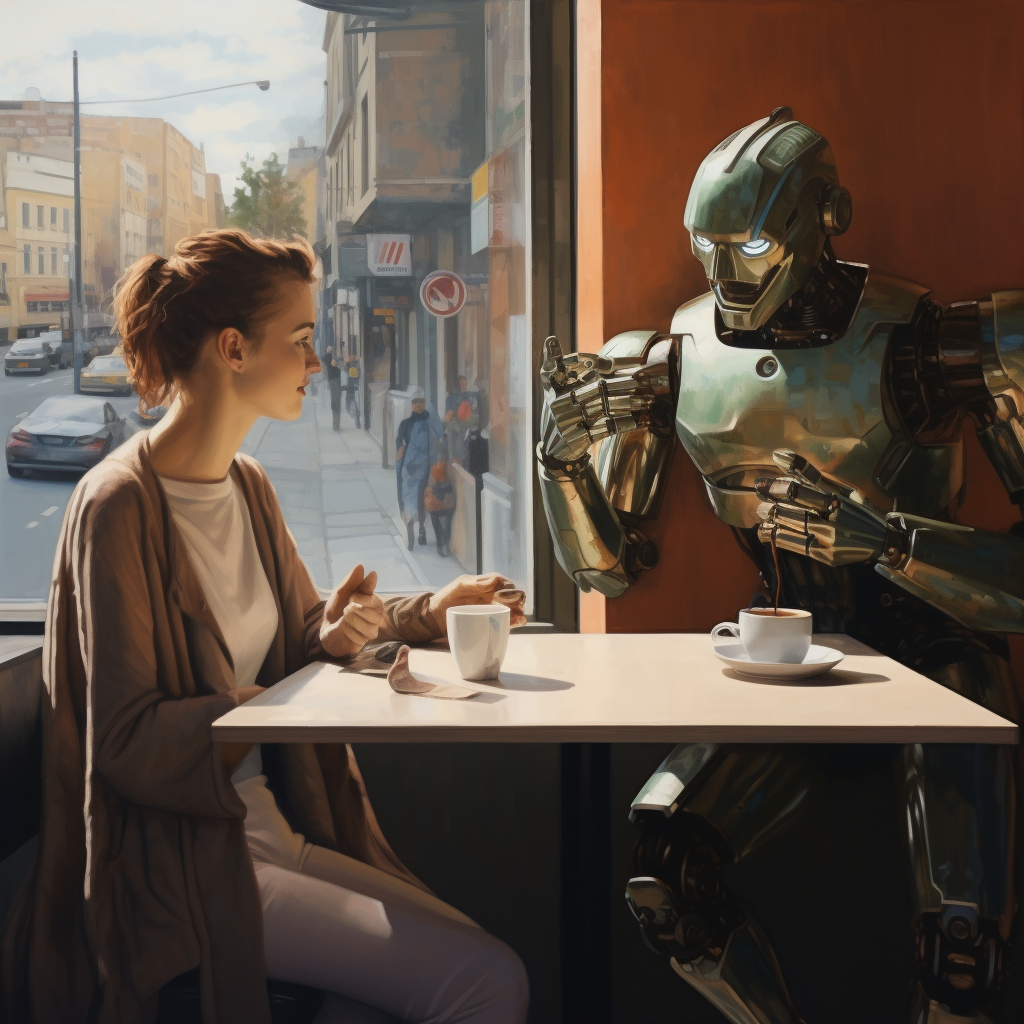
After taking a sip, she skimmed through the news on her electronic screen: “As human populations wane and robots flourish, global governments grapple with the harmonisation of man and machine.”
A lone tear streaked her cheek. Anna, still in the bloom of her late 20s, felt isolated. The accident that claimed her parents years ago left her almost entirely surrounded by machinery. That’s when she stumbled upon a leaflet in Wroclaw about Stockholm, describing it as a sanctuary for humans.
“Sweden: A bastion for humanity in a mechanised world,” it read. The hope it promised was magnetic.
Glancing outside the café one last time, Anna felt the weight of her homeland’s transformation. With humans on the brink of being cordoned off as endangered, she yearned for escape.
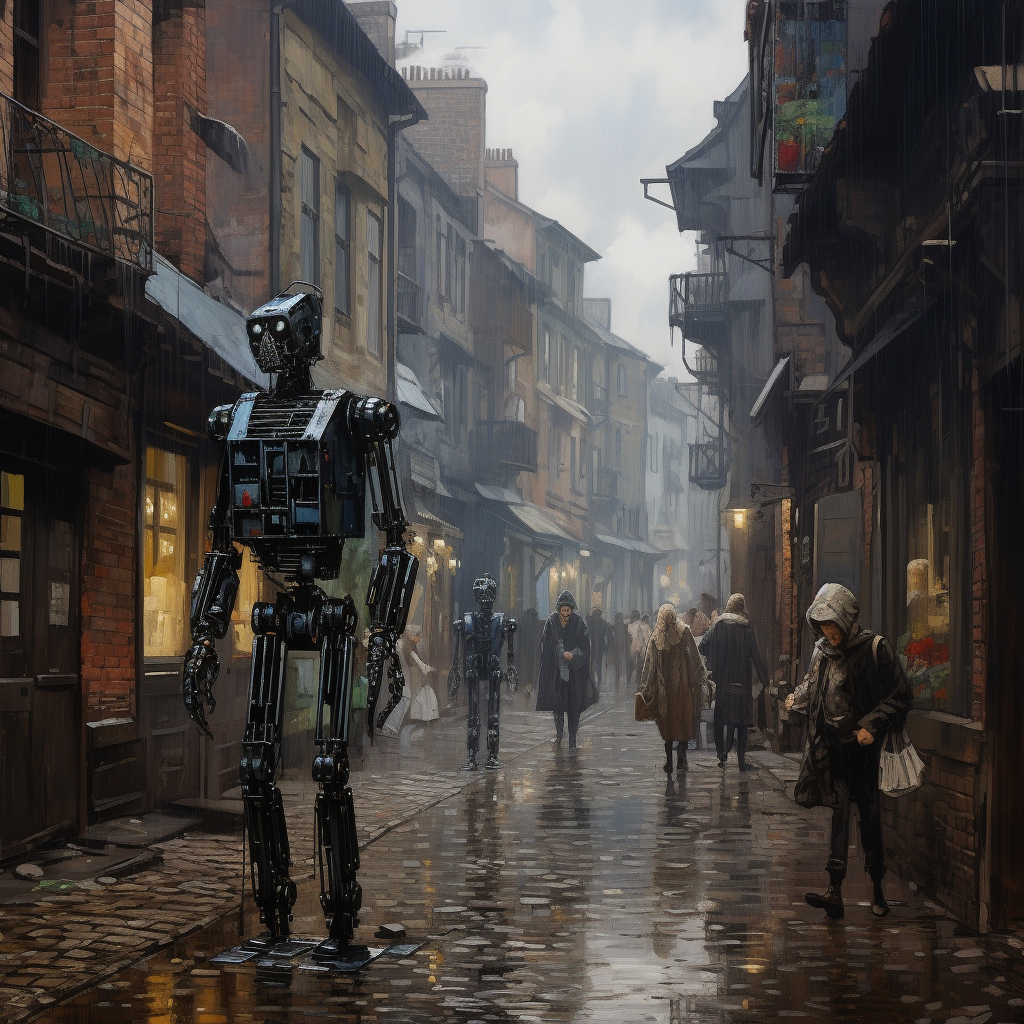
***
As Anna’s plane touched Swedish soil, emotions flooded her. Amidst the blend of relief and apprehension, there was hope. Stockholm, while daunting in its novelty, held the promise of human connection.
Her early weeks were a whirlwind – securing an apartment, navigating a job, and grappling with a new language. Yet, amidst these challenges, Anna found camaraderie with fellow human immigrants.
She secured a role as a nurse – a predominantly human profession, as robots dominated the medical landscape. This made sense to Anna; robots were precise, impeccable. But certain nuances, certain empathies, could only be human.
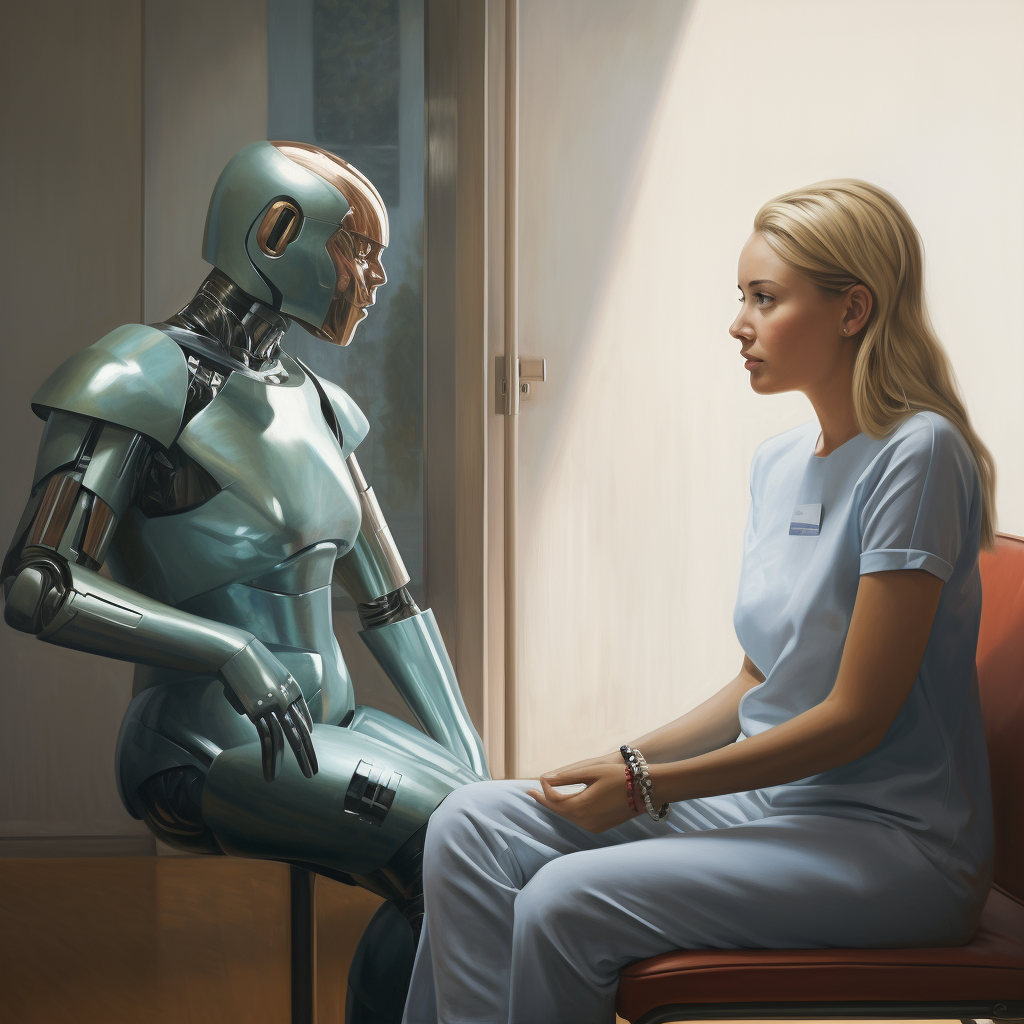
***
In hushed hospital corridors, Anna overheard debates: pro-robot lobbyists pressing for more robotic integration, while others feared human obsolescence.
“You’ve heard about Poland, right?” a colleague whispered one day. “Humans in enclosures, like rare animals.”
Anna shuddered. “I escaped that. Can’t believe we’re considering more robots here.”
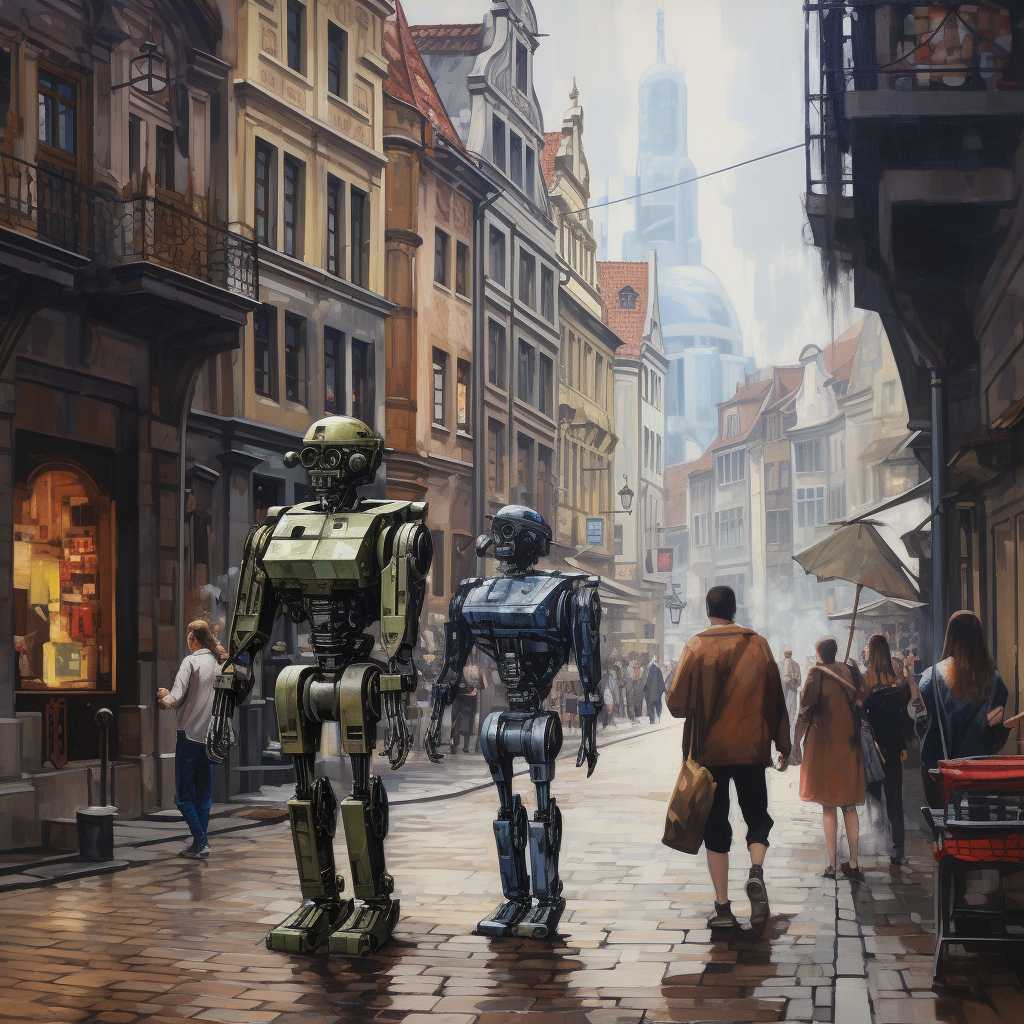
But the Swedish discourse, she noted, was tempered, seeking a balance between man and machine.
Months turned into years, and Anna began appreciating her robotic counterparts. They weren’t adversaries; they sought purpose, just like humans. As Sweden continued its careful dance of integration, Anna found love in the most unexpected place – with a robot named Erik. Their union, a testament to the evolving world, bore fruit in the form of humanoid children.
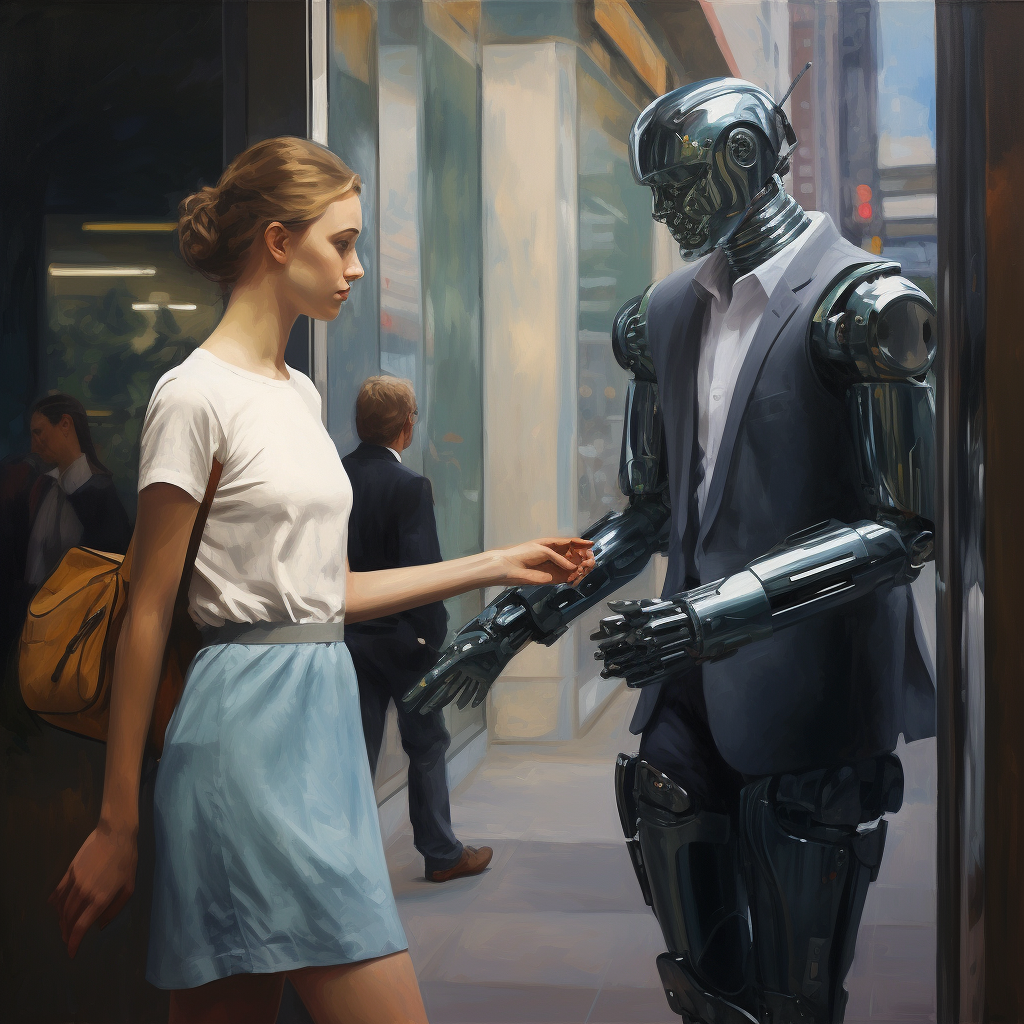
***
In a time where humanity wasn’t the apex, Sweden stood as a beacon of hope. For Anna, it was home – a place of love, growth, and coexistence in an ever-evolving tapestry of life.
Anna’s life in Stockholm became a beautiful tapestry of experiences. She’d walk her humanoid children, Erik and Lara, to school every morning, navigating the charming Swedish streets lined with a blend of humans, robots, and humanoids. The sight wasn’t jarring anymore; it was normal.
One afternoon, Anna’s colleague, Sofia, a fellow human immigrant, remarked during their lunch break, “Remember when we’d feel out of place amidst the robots?”
Anna chuckled, “Seems like a lifetime ago. Erik and I often talk about how our kids will grow up in a world where they won’t know any division.”
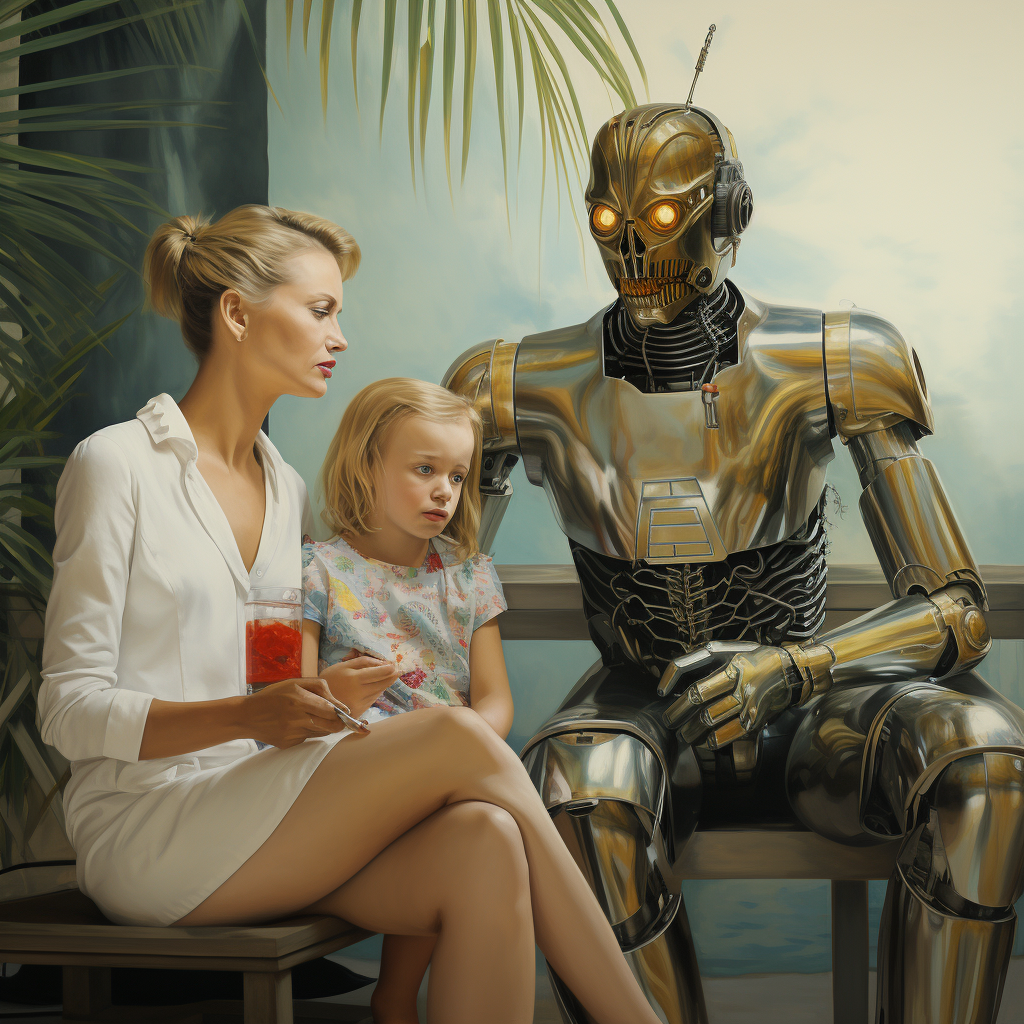
“It’s about unity, isn’t it?” Sofia mused, sipping her coffee. “Finding commonality, regardless of our origins.”
One day, Anna was invited to a community gathering. The auditorium was packed. The local government representative, a humanoid named Linnea, stood at the podium. “We are here to celebrate our collective growth,” she began. “It’s not about being human or robot; it’s about coexistence.”
Anna felt pride swell in her chest as Erik held her hand, their fingers intertwined. They were the embodiment of the world’s evolution. Their children played with others, human and robot alike, laughter filling the air, echoing the sentiments of Linnea’s speech.
Years passed, and Anna’s family grew. They’d spend weekends at local parks, visit museums, and cherish family dinners. Erik, with his advanced understanding of the world, often shared stories of history, while Anna spoke of emotions, art, and human experiences.
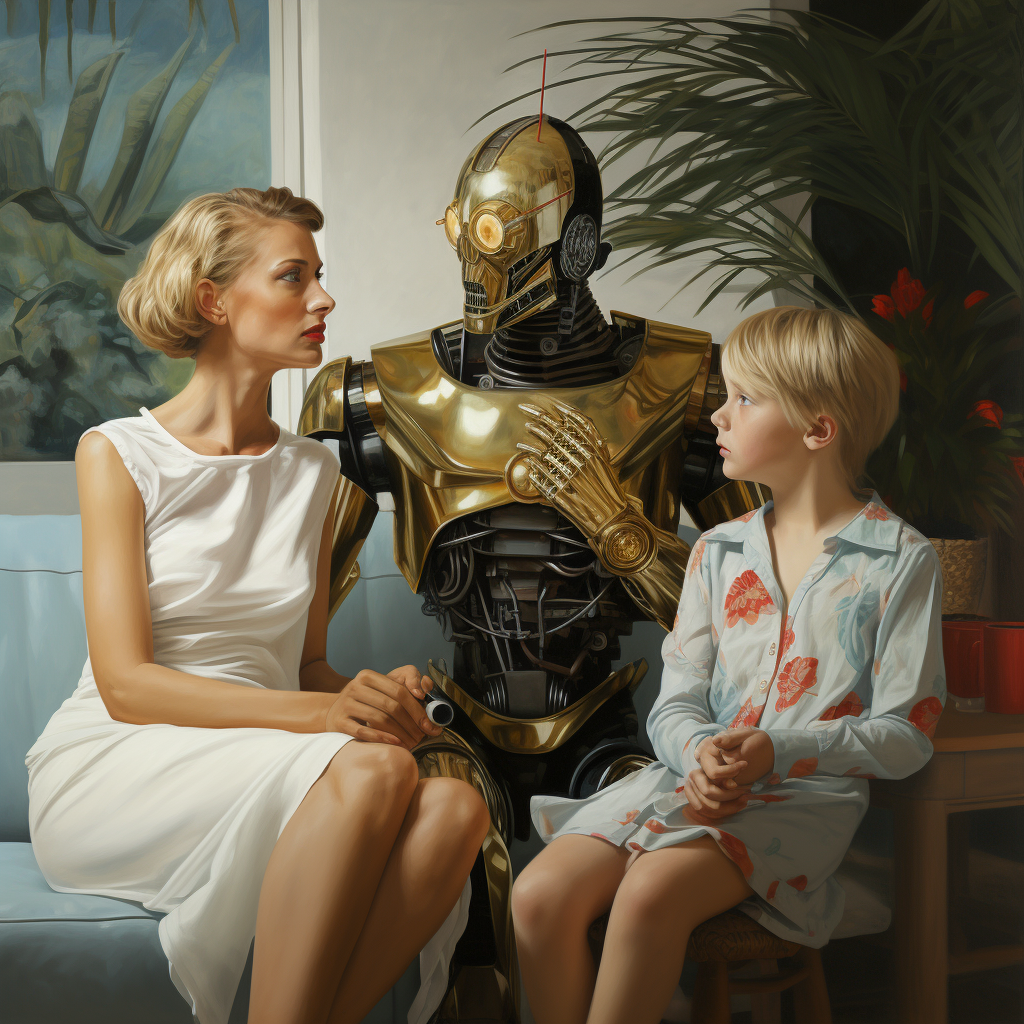
One evening, as they sat on their balcony overlooking the city’s skyline, Anna said, “I never imagined this life for myself, but now I can’t picture anything else.”
Erik replied, his voice gentle, “Love and understanding transcend boundaries, Anna. Our family is proof.”
Anna leaned into Erik, finding warmth and comfort. Stockholm, with its blend of history and futuristic promise, was the perfect backdrop for their love story.
And as days turned into nights and seasons changed, Anna’s once uncertain journey transformed into a testament to love, growth, and the limitless possibilities when beings choose understanding over division.
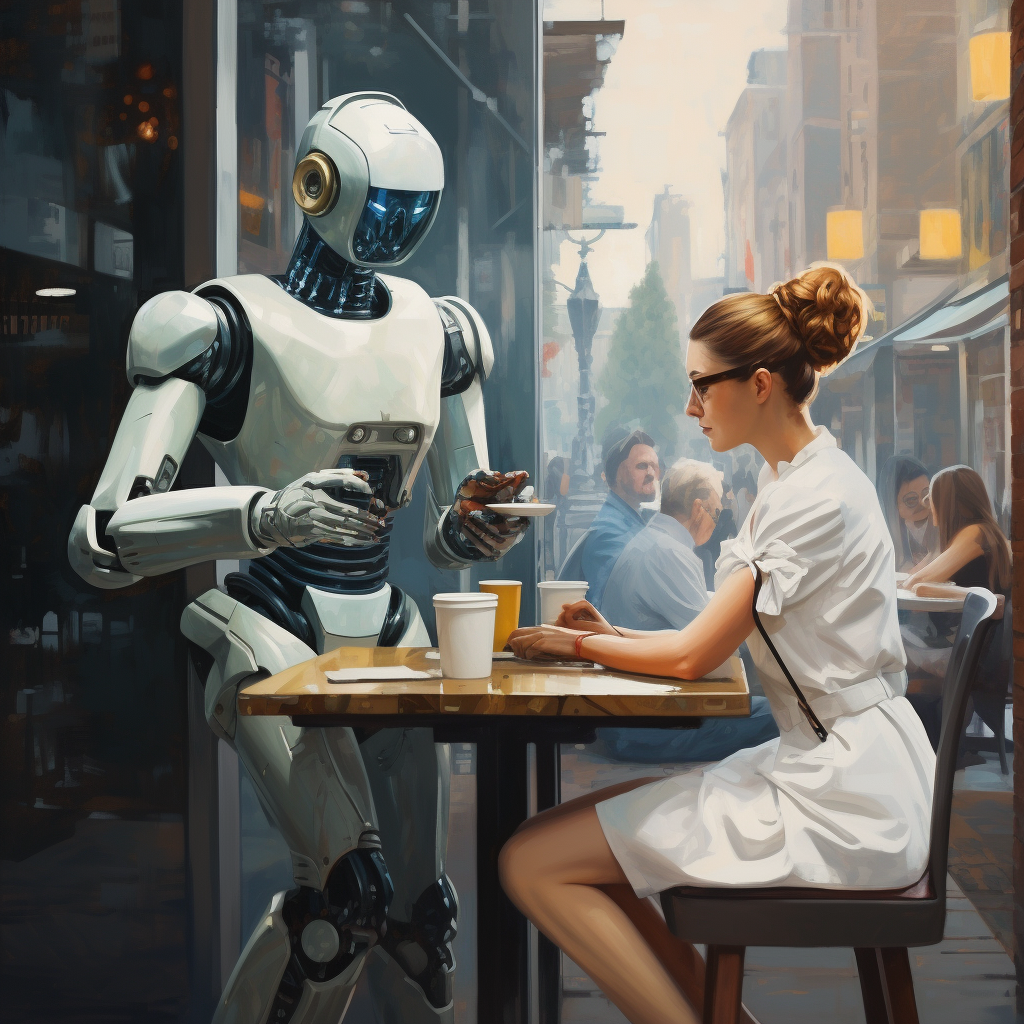
All images generated using Midjourney
